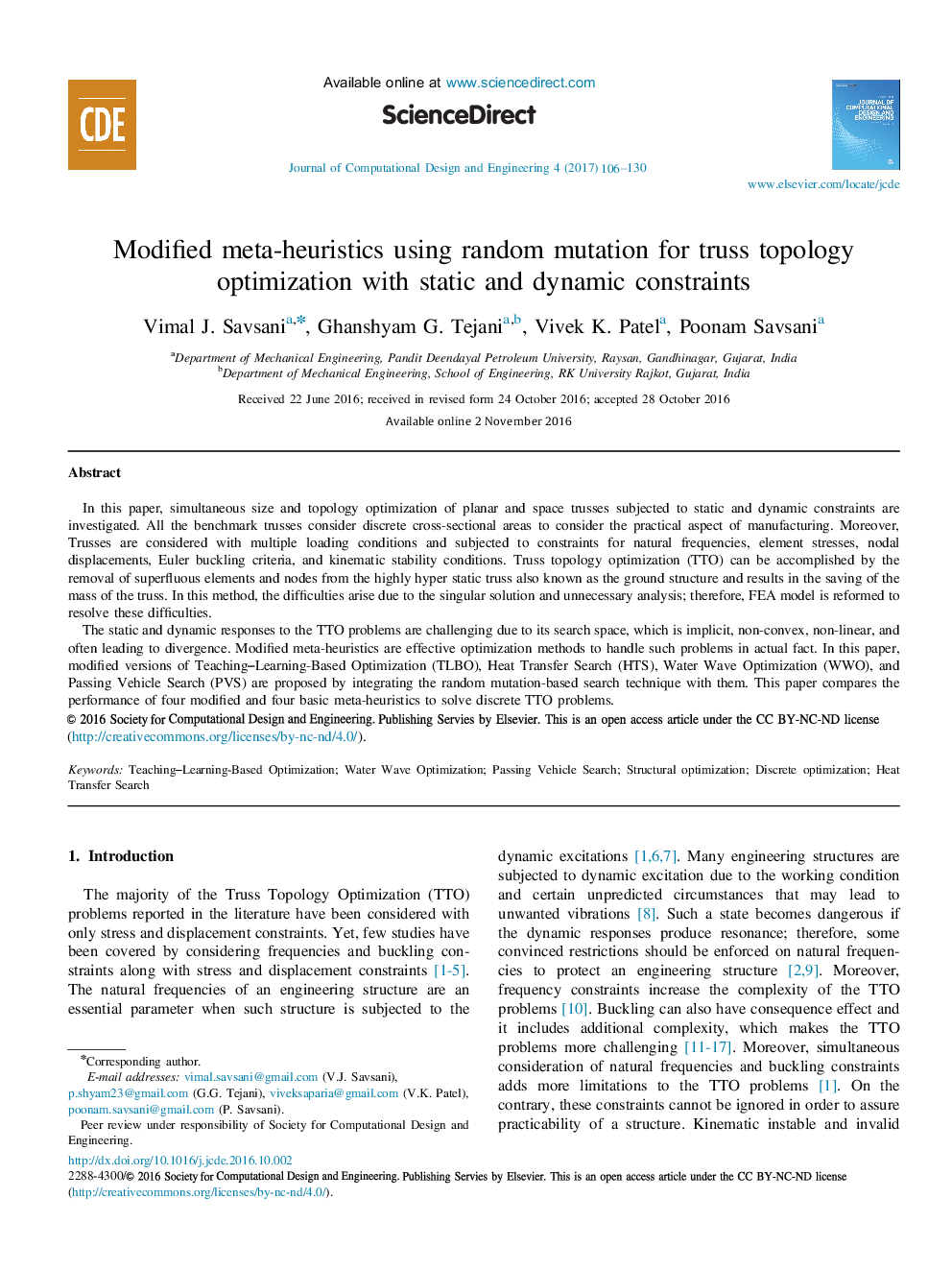| Article ID | Journal | Published Year | Pages | File Type |
|---|---|---|---|---|
| 4952985 | Journal of Computational Design and Engineering | 2017 | 25 Pages |
â¢Modifications in four different recently developed meta-heuristics.â¢Use of random mutation based strategy.â¢Implementation on challenging/benchmark truss topology optimization problems.â¢Modifications effective over basic algorithms.
In this paper, simultaneous size and topology optimization of planar and space trusses subjected to static and dynamic constraints are investigated. All the benchmark trusses consider discrete cross-sectional areas to consider the practical aspect of manufacturing. Moreover, Trusses are considered with multiple loading conditions and subjected to constraints for natural frequencies, element stresses, nodal displacements, Euler buckling criteria, and kinematic stability conditions. Truss topology optimization (TTO) can be accomplished by the removal of superfluous elements and nodes from the highly hyper static truss also known as the ground structure and results in the saving of the mass of the truss. In this method, the difficulties arise due to the singular solution and unnecessary analysis; therefore, FEA model is reformed to resolve these difficulties.The static and dynamic responses to the TTO problems are challenging due to its search space, which is implicit, non-convex, non-linear, and often leading to divergence. Modified meta-heuristics are effective optimization methods to handle such problems in actual fact. In this paper, modified versions of Teaching-Learning-Based Optimization (TLBO), Heat Transfer Search (HTS), Water Wave Optimization (WWO), and Passing Vehicle Search (PVS) are proposed by integrating the random mutation-based search technique with them. This paper compares the performance of four modified and four basic meta-heuristics to solve discrete TTO problems.
Graphical abstractDownload high-res image (173KB)Download full-size image
